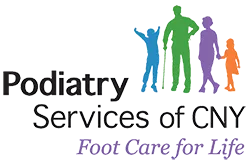 Your footprint is more than just a mark left on the ground—it can provide valuable insights into the health and structure of your feet. In this article, we'll explore the different types of footprints, what they can reveal about your feet, and how you can use this information to maintain foot health.
Your footprint is more than just a mark left on the ground—it can provide valuable insights into the health and structure of your feet. In this article, we'll explore the different types of footprints, what they can reveal about your feet, and how you can use this information to maintain foot health.
Types of Footprints
There are three primary types of footprints that individuals typically exhibit:
-
Neutral foot: A neutral foot shows a balanced distribution of weight across the entire foot, with a noticeable arch in the middle. This type of footprint indicates a normal foot structure and weight distribution, with the arch providing shock absorption and stability during walking and other weight-bearing activities.
-
Flat foot: A flat foot, also known as a low arch or fallen arch, shows a complete or near-complete contact of the foot with the ground. This type of footprint indicates a lack of arch support, resulting in overpronation (excessive inward rolling of the foot) during walking. Flat feet can be congenital (present from birth) or acquired due to factors such as age, obesity, or injury.
-
High arch: A high arch, also known as a supinated foot, shows minimal contact with the ground, with only the heel and the ball of the foot making contact. This type of footprint indicates a high arch structure, which can lead to underpronation (insufficient inward rolling of the foot) during walking. High arches can be genetic or acquired and may be associated with conditions such as cavus foot or neurological disorders.
What Your Footprint Can Reveal
Your footprint can reveal important information about the structure, function, and health of your feet:
-
Arch type: By examining your footprint, you can determine whether you have a neutral arch, flat feet, or high arches. Understanding your arch type can help you choose appropriate footwear and orthotic devices to provide adequate support and prevent foot problems.
-
Pronation: Your footprint can also indicate your degree of pronation, which refers to the natural inward rolling motion of the foot during walking. Overpronation (flat feet) and underpronation (high arches) can affect your gait (walking pattern) and increase the risk of foot injuries and conditions such as plantar fasciitis, shin splints, and stress fractures.
-
Pressure distribution: Your footprint can show how weight is distributed across your feet while standing or walking. Uneven pressure distribution or excessive pressure in certain areas of the foot can indicate biomechanical issues or foot deformities that may require intervention or treatment.
Using Your Footprint to Maintain Foot Health
Understanding your footprint can empower you to take proactive steps to maintain foot health and prevent problems:
-
Choose appropriate footwear: Select shoes that are designed for your specific arch type and pronation pattern. For example, individuals with flat feet may benefit from stability or motion control shoes with built-in arch support, while those with high arches may need cushioned shoes with flexibility to accommodate their foot shape.
-
Use orthotic devices: Consider using orthotic inserts or custom-made orthotics to provide additional support and cushioning for your feet. Orthotics can help correct biomechanical imbalances, improve foot alignment, and reduce the risk of foot injuries and overuse conditions.
-
Practice foot exercises: Perform strengthening and stretching exercises to improve foot strength, flexibility, and stability. Exercises such as toe curls, arch lifts, and calf stretches can help strengthen the muscles, tendons, and ligaments of the feet and ankles, reducing the risk of overpronation or underpronation.
-
Seek professional evaluation: If you experience foot pain, discomfort, or instability, consult a podiatrist or healthcare professional for a comprehensive foot evaluation. They can assess your foot structure, gait mechanics, and biomechanics and recommend appropriate treatments or interventions to address any underlying foot issues.
Conclusion
Your footprint can provide valuable insights into the structure, function, and health of your feet. By understanding your arch type, pronation pattern, and pressure distribution, you can make informed decisions about footwear, orthotic devices, and foot care practices to maintain foot health and prevent problems. If you have concerns about your foot health or experience foot-related symptoms, don't hesitate to seek professional evaluation and guidance from a podiatrist or healthcare professional.
Disclaimer:
The information on this website is provided for educational and information purposes only and is not medical advice. Always consult with a licensed medical provider and follow their recommendations regardless of what you read on this website. If you think you are having a medical emergency, dial 911 or go to the nearest emergency room. Links to other third-party websites are provided for your convenience only. If you decide to access any of the third-party websites, you do so entirely at your own risk and subject to the terms of use for those websites. Neither Podiatry Services of CNY, nor any contributor to this website, makes any representation, express or implied, regarding the information provided on this website or any information you may access on a third-party website using a link. Use of this website does not establish a doctor-patient relationship. If you would like to request an appointment with a health care provider, please call our office at (315) 458-1777.
